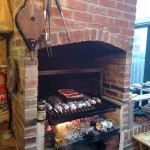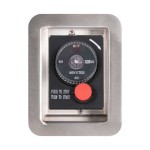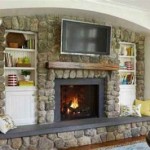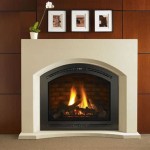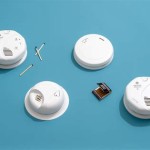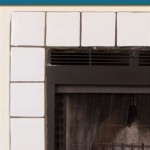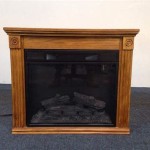Installing a Fireplace in an Existing Home: A Comprehensive Guide
Adding a fireplace to an existing home can enhance its aesthetic appeal, increase its value, and provide a supplemental heating source. However, this project requires careful planning and execution to ensure safety and compliance with local building codes. This article outlines the key considerations and steps involved in installing a fireplace in an existing residence.
Assessing the Feasibility and Choosing a Fireplace Type
The initial step involves evaluating the structural feasibility and determining the appropriate type of fireplace for the home. This includes considering the existing chimney situation, the availability of fuel sources, and the homeowner's aesthetic preferences and budget.
The presence of a pre-existing chimney significantly simplifies the installation process. If a chimney already exists and is in good working order, it can potentially be used for a new fireplace, provided it meets the necessary requirements for venting the chosen fireplace type. A qualified chimney sweep should inspect the chimney to ensure its integrity and suitability for the new appliance. This inspection should identify any cracks, obstructions, or other issues that need to be addressed before proceeding.
If no chimney exists, a new one must be constructed. This adds considerable complexity and expense to the project. The chimney must be properly sized and constructed according to local building codes and manufacturer's specifications. The chimney's location will also impact the placement of the fireplace, potentially requiring structural modifications to the home.
Several types of fireplaces are available, each with its own advantages and disadvantages:
*Wood-Burning Fireplaces:
These offer a classic ambiance and can provide significant heat. However, they require a readily available source of firewood and produce emissions that can impact air quality. They also necessitate regular cleaning and maintenance to remove creosote buildup in the chimney. Furthermore, some municipalities restrict or ban wood-burning fireplaces due to air quality concerns. *Gas Fireplaces:
Gas fireplaces offer convenience and ease of use. They can be turned on and off with the flip of a switch or the push of a button. They also produce fewer emissions than wood-burning fireplaces. Gas fireplaces require a connection to a natural gas line or a propane tank. Venting options include direct-vent, vent-free, and B-vent systems, each with its own installation requirements. *Electric Fireplaces:
Electric fireplaces are the easiest to install, requiring only a standard electrical outlet. They provide supplemental heat and visual appeal without the need for venting. However, they generally produce less heat than wood-burning or gas fireplaces and do not offer the same authentic ambiance. *Pellet Stoves:
Pellet stoves burn compressed wood pellets, offering a more efficient and cleaner-burning alternative to wood-burning fireplaces. They require a hopper to hold the pellets and an auger to feed them into the firebox. Pellet stoves require venting to the outside.The choice of fireplace type depends on several factors, including the homeowner's preferences, budget, and the availability of fuel sources. It is crucial to carefully consider the pros and cons of each type before making a decision.
Planning and Permitting
Before commencing any work, it is essential to develop a detailed plan and obtain the necessary permits. This process involves consulting with local building officials and understanding the applicable codes and regulations.
Building permits are typically required for fireplace installations to ensure compliance with safety and construction standards. The permit application process may require submitting detailed plans and specifications for the fireplace, chimney, and venting system. The plans should demonstrate compliance with all applicable codes, including fire safety regulations, structural requirements, and energy efficiency standards.
Local building codes may dictate specific requirements for fireplace installations, such as minimum clearances to combustible materials, chimney height and diameter, and venting system design. It is crucial to thoroughly research and understand these requirements to ensure that the installation meets all applicable standards.
In addition to building permits, other permits may be required depending on the scope of the project. For example, if the installation involves modifications to the electrical system, an electrical permit may be required. If the installation involves connecting to a gas line, a gas permit may be required. Contacting the local permitting office is essential to identify all necessary permits.
Engaging a qualified contractor with experience in fireplace installations can streamline the permitting process. A contractor can assist with preparing the necessary drawings and specifications, submitting the permit application, and coordinating inspections with local building officials.
Installation Process and Safety Considerations
The installation process varies depending on the type of fireplace being installed. However, certain core steps and safety precautions apply to all installations.
Preparing the installation site is a critical first step. This involves clearing the area around the fireplace location and protecting floors and furniture from damage. If a chimney needs to be built or modified, this work should be completed before installing the fireplace itself.
Installing the fireplace requires careful attention to detail and adherence to the manufacturer's instructions. The fireplace should be properly positioned and secured to the floor or wall. Connections to gas lines or electrical outlets should be made by qualified professionals and inspected for leaks or electrical hazards.
Venting the fireplace is crucial for removing combustion byproducts and ensuring safe operation. The venting system should be properly sized and installed according to the manufacturer's specifications and local building codes. The venting system should be inspected for leaks and obstructions before the fireplace is used.
Ensuring proper clearances to combustible materials is essential for preventing fires. The manufacturer's instructions will specify the minimum clearances required for different types of materials, such as wood framing, drywall, and furniture. These clearances should be strictly adhered to during the installation process.
Testing the fireplace after installation is crucial for verifying its safe and proper operation. This includes checking for gas leaks, ensuring proper venting, and verifying that the fireplace ignites and burns correctly. A qualified professional should conduct the testing and make any necessary adjustments or repairs.
Safety considerations are paramount throughout the installation process. Working with gas lines and electrical systems requires specialized knowledge and training. Hiring qualified professionals for these tasks is essential for preventing accidents and ensuring a safe installation. Fire extinguishers should be readily available and accessible in case of emergency.
Carbon monoxide detectors should be installed in the home to provide early warning of carbon monoxide poisoning. Carbon monoxide is a colorless, odorless gas that can be produced by improperly functioning fireplaces.
Regular maintenance is essential for ensuring the safe and efficient operation of the fireplace. This includes cleaning the chimney, inspecting the venting system, and checking for any signs of damage or wear. A qualified chimney sweep should perform an annual inspection and cleaning of the chimney.
Fireplace doors or screens should be used to prevent sparks and embers from escaping into the room. These devices also provide a barrier to prevent children and pets from getting too close to the fire.
Proper storage of firewood is essential for preventing fires and pest infestations. Firewood should be stored outdoors, away from the house, and covered to protect it from the elements. Piles of wood stored inside the house can attract pests and pose a fire hazard.

Adding A Gas Fireplace To An Existing Home Just Log Fires

Adding A Fireplace To Existing Home Where For Fireplaces

Your Home Doesn T Have A Fireplace And You Want To Add One

Adding A Fireplace Is It Actually Possible Home Sweet Homes

What Does It Cost To Install A Fireplace Vs Wood Stove Stamford Fireplaces

How To Add A Gas Fireplace An Existing Home

4 Things Every Homeowner Should Know Before Installing A Fireplace

How To Install A Fireplace Homeserve Usa

Fireplace Additions Answers On

How Much Does It Cost To Put In A Fireplace Direct Fireplaces
Related Posts

